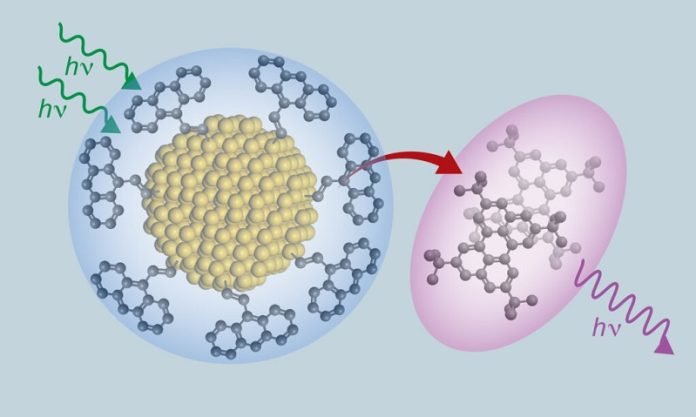
A group of scientists and engineers, including researchers from The University of Texas at Austin, have developed a groundbreaking material that has the potential to revolutionize various technologies.
In a recent study published in Nature Chemistry, they introduced a new class of materials composed of ultra-small silicon nanoparticles and organic molecules similar to those used in OLED TVs.
What makes this material special is its ability to absorb low-energy light and convert it into higher-energy light.
By combining the strengths of silicon and organic molecules, the researchers have created a hybrid material with unique properties that go beyond what each component can achieve individually.
This breakthrough opens up exciting possibilities for more efficient solar panels, enhanced medical imaging, and improved night vision goggles.
In practical terms, this material can transform long-wavelength photons, such as those found in red light that can easily pass through tissue, fog, and liquids, into short-wavelength blue or ultraviolet photons.
This characteristic holds tremendous potential for applications like bioimaging, light-based 3D printing, and light sensors that can help self-driving cars navigate through fog.
Moreover, the material’s light conversion capabilities can significantly enhance the efficiency of solar cells.
By capturing near-infrared light, which is typically not utilized by conventional solar panels, the technology could reduce the size of solar panels by as much as 30% when fully optimized.
The research team, comprised of scientists from the University of California Riverside, University of Colorado Boulder, and University of Utah, alongside their counterparts from UT Austin, has been exploring light conversion for several years.
In a previous study, they successfully connected anthracene—an organic molecule that emits blue light—with silicon, a material commonly used in solar panels and semiconductors.
Building upon this achievement, they developed a novel technique to establish strong, electrically conductive bridges between anthracene and silicon nanocrystals.
This breakthrough chemical bond significantly accelerates energy exchange between the two molecules, nearly doubling the efficiency of converting lower-energy light into higher-energy light compared to their previous work.
The research was generously supported by organizations including the National Science Foundation, The Welch Foundation, the W.M. Keck Foundation, and the Air Force Office of Scientific Research.
This remarkable scientific discovery paves the way for extraordinary advancements in various fields. Imagine future technologies that can see in near-infrared, aiding autonomous vehicles, sensors, and night vision systems.
By harnessing the power of light in innovative ways, this new material unlocks a realm of possibilities, propelling us toward a brighter future.



